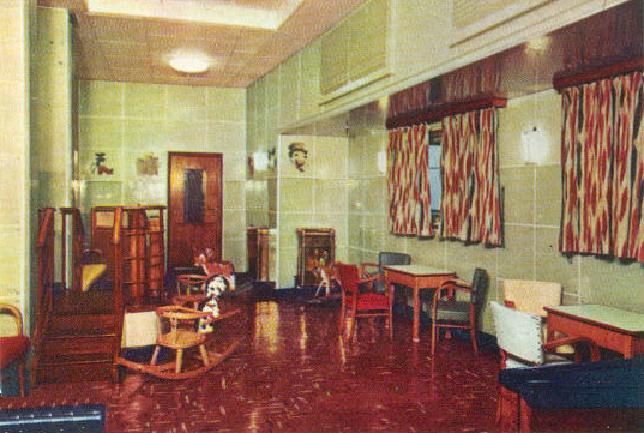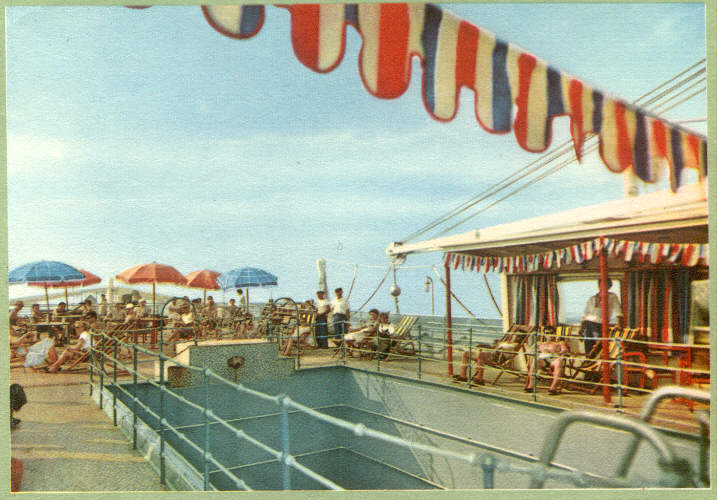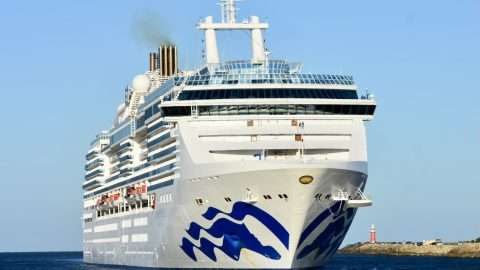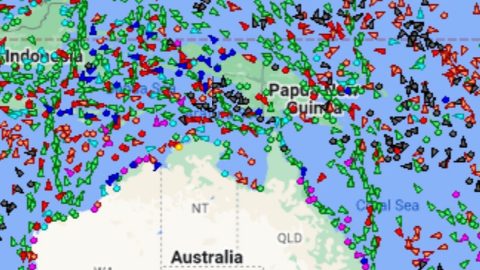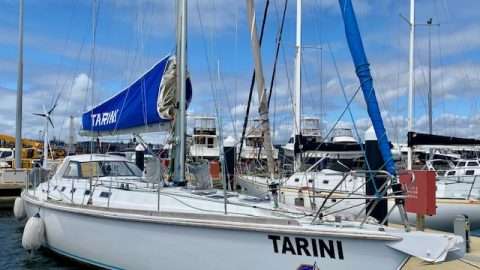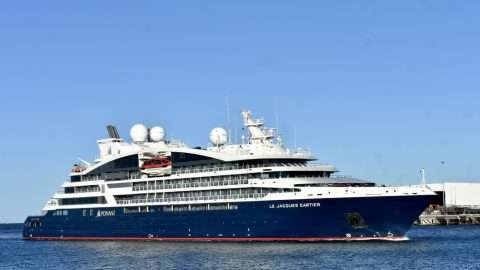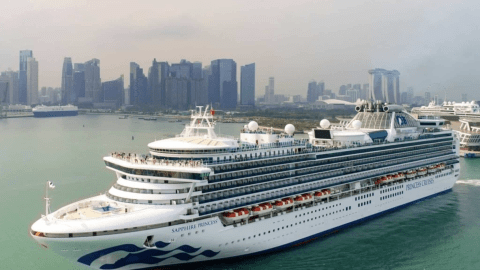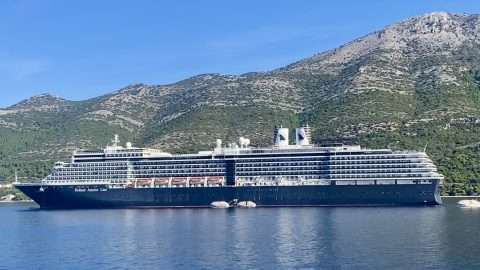Remember the Sitmar Line’s Fairsea? We are sure, like Garry McAlpine, many do.
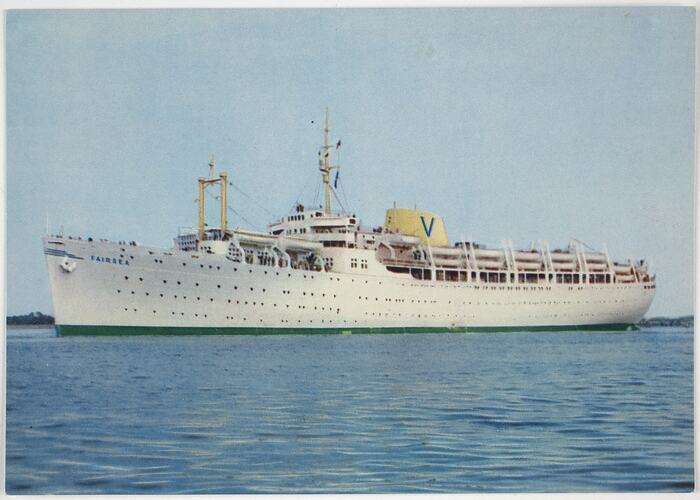
Fairsea. Source Museums Victoria
As it turns out, in the late 1940s, just a few few years after the end of WW2, she became the Sitmar Line’s first passenger ship. From 1949-1951 she brought many displaced persons to Australia.
After that, she also brought many fare-paying migrants to Australia, including some of the proverbial ‘£10 Poms’!
On 14 February 1964, Garry McAlpine, along with his parents, sister and brother, arrived in Fremantle on the Fairsea as new British migrants, having left Southampton a month earlier on 14 January and sailed directly to Fremantle via the Suez Canal with port calls at Port Said and Aden.

Garry on left
On the family’s first sighting of Australia, which they later learned was Rottnest Island, they were surprised at what ‘a small place’ Perth was!
It seems the family had fun on the way out, Garry’s Mum not the least. She was one of the shipboard entertainers.
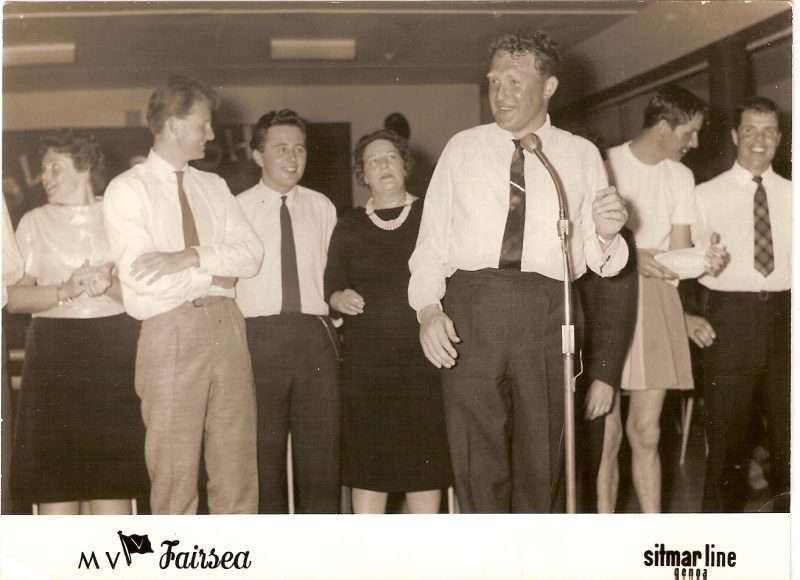
Garry’s Mum in black
What not everyone knew then, or even later when the Fairsea became a popular cruise liner, was that the Fairsea had an intriguing backstory as a WW2 escort carrier – in effect, a mini-aircraft carrier ensuring merchant convoys were kept as free from enemy attach as possible as they plied the open seas during the war years.
As described by the British Royal Navy Research Archive, the escort carrier was designed as a solution to the shortage of naval air power for convoy protection ‘by repurposing merchant hulls into pocket sized aircraft carriers’.
By the end of WW2, Britain had operated 45 escort carriers, in the Atlantic, Arctic, Indian and Pacific oceans: 6 of these were British built 39 were US built.
The first escort carrier was the British built HMS Audacity, entering service on 17 June 1941. She was the first escort carrier to operate as a convoy escort sailing with convoy, in September 1941. Although she only carried a maximum of 8 fighters and had only a brief active career before being sunk, she had shown that the concept worked.
The idea of converting merchant hulls into vessels capable of operating naval aircraft was then taken forward by the US Navy who began utilising merchant ‘C3’ type freighter hulls for conversions into escort carriers. The first US conversion was the USS Long Island, which was commissioned on 2 June 1941.

Rio de la Plata being converted to the Charger
A number of the C3 Class vessels, including the Rio de la Plata, had been built for the American shipping company Moore-McCormick Line for their passenger and cargo service between New York and the east coast of South America. However, before the Rio had such a commercial life, she was converted into one of the escort carriers and renamed Charger.
Under the terms of the famous Lend Lease agreement between the US and Britain – by which the US effectively took sides in WW2 without quite saying that’s what she was doing – 39 US built escort carriers were transferred to the control of the British Admiralty.
The first five escort carrier conversions completed for the Royal Navy – Archer, Avenger, Biter, Charger, and Dasher (not quite Santa’s reindeer’s names, but you start to wonder!) – were essentially copies of the ‘Long Island’ design. Archer was the first to be handed over, commissioned in November 1941.
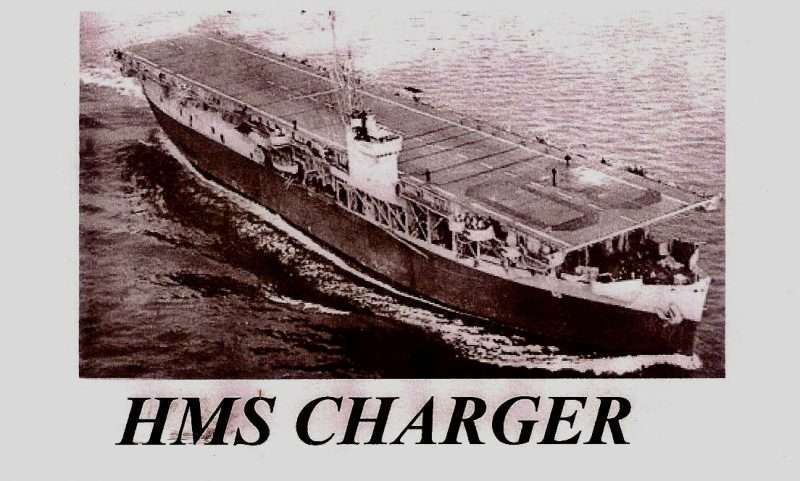
Charger, as it transpires, was reclaimed by the US Navy two days after she was handed over for duty so she could be used as a training carrier and, it seems, then served for four years in the Pacific.
Archer saw little active service before machinery problems saw her laid up for a considerable time.
Avenger and Dasher were both sunk, and Biter was the only one of the initial batch to see continuous active service in t3he Royal Navy until the end of the war.
After the war, a good number of C3 Class ships were again converted, this time into migrant ships, including Charger’s Moore-McCormack sister, Mormacmail, which became the German registered, Holland America Line operated Seven Seas. She operated to Canada, the US, Australia and New Zealand, as well as an occasional cruise ship.
Others became the Cogedar Line’s Flaminia, and Flotta Lauro’s Roma and Sydney, also employed on the Australia – New Zealand service.
But back to Charger. In 1949, Charger was purchased by Alexander Vlasov, founder of Sitmar Lines, and placed under the management of the Alvion Steam Ship Company. Soon enough she was renamed Fairsea. In Genoa, Italy she was reconstructed as a no-fuss migrant ship with accommodation for a massive 1,800 persons.
Fairsea departed on her maiden voyage from Genoa to Australia on 3 December 1949, after which she operated the Bremerhaven – Sydney service.
In November 1953, whilst berthing in Melbourne, a fire broke out In the engine room, which was soon extinguished, the result being that her engine room was flooded. After cleaning up she was able to continue her duties.
In December 1953, she received some cosmetic changes, such as her funnel and mast. Having regularly visited Australia, it was only in February 1957 that she returned home eastward for the first time, making her maiden call to New Zealand and then continuing across the Pacific, and undertaking her first ever transit of the Panama Canal.
Late in 1957, Fairsea received a massive refit at Trieste, Italy. Her superstructure was raised one deck, with extensions forward and aft of the promenade deck adding new public rooms. Her aft derricks were removed with one of the holds became a swimming pool. Air-conditioning was installed and cabins upgraded. She emerged as a pleasing liner with her tonnage increased but now accommodating a fewer 1,460 passengers. Interior décor, as you’d hope and expect, exuded an Italian flair.
Finally, departing April 1958, she headed Downunder. Being under Government contract, Fairsea continued to transport British passengers to Australia and News Zealand for years to come, including Garry and his family in 1964.
But before they arrived in Freo, in 1961 Fairsea received yet another refit, which saw her accommodation further upgraded, with the result her capacity was again reduced, now to 1,212.
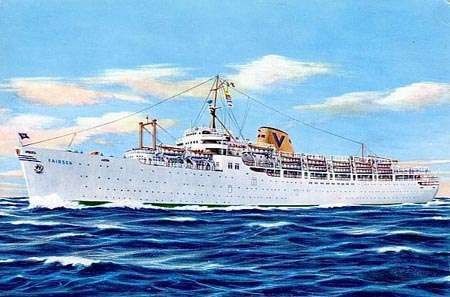
Fairsea
Fairsea having become a popular ship in Australia, Sitmar decided to try her out as a cruise ship. She departed Sydney on July 7, 1966, visiting Cairns, the Great Barrier Reef (Hayman Island) and Melbourne. In between her line voyages, she continued to undertake the occasional cruise.
In 1969 while west of Panama, a fire broke out on the Fairsea, completely damaging the engine room. The decision was made that it was not economical to repair the old ship and on 9 July 1969, the Fairsea left Balboa bound for the shipbreakers at La Spezia, Italy.
While Fairsea passed her name to a new Fairsea in due course, one feels sure no other could ever be quite like the Rio de la Plata-cum-Charger-cum-Fairsea!
* By Garry McAlpine, with Michael Barker, Editor, Fremantle Shipping News
WHILE YOU’RE HERE –
PLEASE HELP US TO GROW FREMANTLE SHIPPING NEWS
FSN is a reader-supported, volunteer-assisted online magazine all about Fremantle. Thanks for helping to keep FSN keeping on!
** Don’t forget to SUBSCRIBE to receive your free copy of The Weekly Edition of the Shipping News each Friday!
